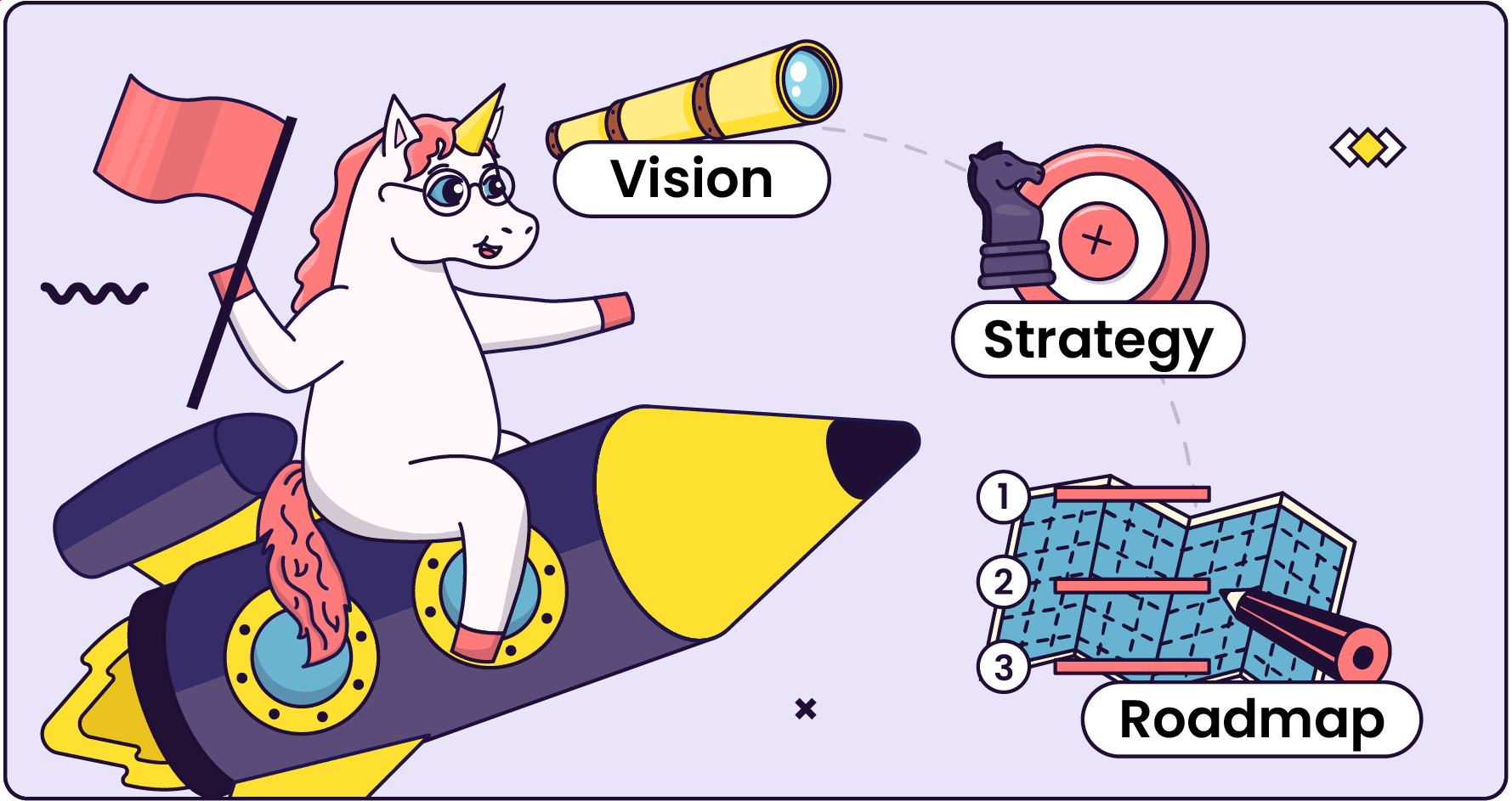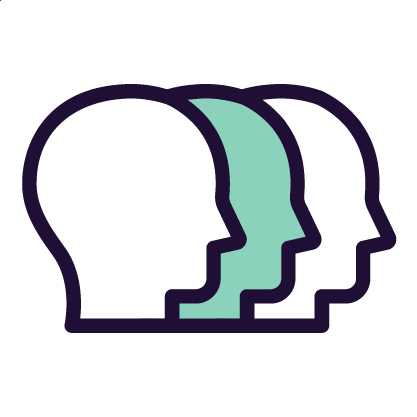To the uninitiated, 'EdTech' might conjure images of clunky educational computer games from the nineties, replete with pixelated dysentery and questionable historical accuracy. But today, it is a bustling, chaotic, and fantastically complex industry.
The person attempting to impose order on this glorious mess is usually someone like me: the EdTech Product Manager, a professional who combines the patience of a primary school teacher with the strategic cunning of a chess grandmaster. (I am lacking in both areas, especially the former, but I try my best.)

In the broader tech industry, a Product Manager (PM) is often called the CEO of a product. They are the central hub, responsible for defining the product's vision, strategy, and roadmap.

A PM’s day is a whirlwind of constant context-switching: one hour they are deep in user research calls, the next they are debating technical feasibility with engineers, and the next presenting a business case to executives.
They typically work in a tight-knit 'product trio' alongside a design lead and a tech lead to ensure they are building a product that is valuable (customers will buy it), usable (they can figure out how to use it), and feasible (engineers can actually build it) (Cagan, 2018). Their mission is to create a product that customers love, yet that also works for the business.
Now, take that role, with all its inherent complexity, and drop it into the unpredictable world of education.

If you’re already a Product Manager and looking to move into education for a more rewarding career, you should know that it’s a messy place to operate.
A Product Manager at a social media company has a challenging, but relatively linear, problem. They have a user, and the goal is to maximise that user's engagement. The metrics for success are immediate and quantifiable. The EdTech PM’s world is far murkier. Here are some of their special problems.

The EdTech PM serves a multi-headed hydra of a user base. Imagine a new maths learning app.
This tangled web of 'stakeholder complexity' is the EdTech PM’s first great challenge, with current research highlighting the ongoing difficulty of aligning institutional goals with the diverse and evolving needs of both students and faculty in a hybrid world (EDUCAUSE, 2023).

Education is a deeply aspirational purchase. It’s akin to selling high-end fitness equipment; the customer isn't just buying a treadmill, they're buying the vision of themselves as a healthier, more disciplined person.
Likewise, a university buys an AI-powered analytics tool because it's buying the identity of a cutting-edge institution, even if its current data practices are managed on a spreadsheet from 2003.
Regardless of their context, the PM must sell a credible vision of transformation while building a product that works for the customer's messy reality today.

How do you A/B test for ‘critical thinking’? Standard tech metrics like 'time-on-task' can be dangerously misleading; is a student spending 30 minutes on a problem because they are deeply engaged or hopelessly stuck?
This ambiguity requires PMs to partner with learning scientists to develop more sophisticated measures of success, like portfolio reviews, concept mastery charts, or even career shifts.
Measuring these ‘learning outcomes’ is the holy grail, and it requires a deep focus on pedagogical effectiveness, not just simple user engagement (Kirkwood & Price, 2014).

If you’re looking to land a role as a Product Manager in the world of education, know that the type of organisation you end up in will have an enormous impact on your day-to-day.
The life of an EdTech PM varies wildly depending on who signs their pay cheques. I would know, since I am a PM-for-hire and often find myself working across all three of these spaces.

This PM, working at an SIS or LMS company like Instructure Canvas, must navigate labyrinthine procurement processes, responding to lengthy 'Requests for Proposals' (RFPs) that dictate features down to the last dropdown menu.
Their challenge is to build one scalable platform that can be sold to thousands of institutions, each believing itself to be unique.
This often means prioritising features that tick compliance or other procurement boxes over those that might spark innovation or improve customer satisfaction. But, if you love the process of polishing the same thing over and over to see it get better each year, this is likely a good place to start.

Working within a university, school, or other accredited institution that sells hybrid or online education, this PM must be a master diplomat. They aren’t building from scratch; they are patching together a sprawling mess of existing technologies.
This means they are expected to be an expert on the inner workings of an LMS, SIS, CRM, data tools, and authoring tools that are all behaving a little differently than they did three months ago.
On a typical day they’ll spend their time persuading the history faculty to adopt the same video tool as the science department, navigating territorial disputes over data ownership, pulling their hair out over misbehaving integrations, and championing user-centric design in an environment often governed by committee.
Their victories are measured in increased enrolments and throughput, reduced support tickets, and faculty members who complain slightly less than they did last term.

A PM selling unaccredited learning through an app like Udemy or Duolingo lives in a world closer to traditional tech. Yet, they face the unique challenge of sustaining motivation for a difficult task.
Unlike a social media app which can leverage social pressure, a learning app must rely on principles of learning science like 'spaced repetition' and 'mastery learning' to create 'desirable difficulty'—keeping users challenged but not so discouraged that they quit.
Whether or not the users are actually learning can often be less important to the organisation than whether or not they are ‘engaged’, which can be frustrating to those committed to excellent education.

There are many roles in a product team, and the Product Manager is just one of them. The most closely related one, however, is that of the Product Owner. The core difference between a Product Manager (PM) and a Product Owner (PO) lies in their focus: the PM is strategic and market-facing, while the PO is tactical and development-team-facing.
In short:
Larger companies often have both roles to allow the PM to focus on the market and vision, while the PO is embedded with the development team to ensure efficient execution.
In smaller companies or startups, a single person, usually titled Product Manager, performs both functions, balancing strategic planning with the daily tactical needs of the engineering team. Consequently, the two roles often attract and reward different personality types.
The classic Product Manager thrives on ambiguity and is often a strategic storyteller, skilled at evangelising a vision to executives, customers, and the market. They are highly empathetic, endlessly curious about user problems, and persuasive influencers who can align disparate groups around a common goal. They enjoy exploring the 'why' and are comfortable making big bets based on incomplete data.

In contrast, the ideal Product Owner is a master of order and execution. They are deeply pragmatic, detail-oriented, and decisive, finding satisfaction in translating strategic ambiguity into a clear, actionable plan. They excel at organisation, enjoy working intimately with a development team, and are skilled at making the countless daily trade-offs required to keep a project moving.
While the PM is energised by the market, the PO is energised by the team and the process of building.
Carefully consider which of these roles you are best-suited to. Product Management can be a very stressful job, so if you’re at all unsure, perhaps aim for a Product Owner role first. This position typically progresses into Product Management as a next step, so if you’re a good fit, you’ll end up where you want to go.

Many find their way into a Product Owner or Product Management role after starting their EdTech career as a Learning Experience Designer, Instructional Designer, or E-Learning Developer.
Personally, I took a winding road. After a brief stint developing e-learning content at a university, I became a Learning Designer at a small agency. And small agencies all have one thing in common: They teach you how to be a Swiss army-knife!

Designing EdTech systems soon became part of my responsibilities, and engendered in me a strong interest in UX. My next role was therefore a UX one, which helped me learn all about prioritising, designing, and testing features.
I also learned a lot about working with different stakeholders in tech, and managing their personalities (read: quiet-crying behind my whiteboard after many a workshop with the engineers).
From there onwards I could combine my learning design skills, UX experience, and thickened skin to move into product leadership roles in the EdTech world. Along the way, I learned that to make the leap to Product Manager, a few key steps are non-negotiable:
In the end, the EdTech PM is a unique breed. They are optimists who believe technology can solve education's problems, and pragmatists who realise progress often means patching a legacy system.
They are, above all, translators, building bridges between pedagogy and programming, one feature at a time. It’s a messy, frustrating, and deeply rewarding job. And someone, thank goodness, has to do it.
